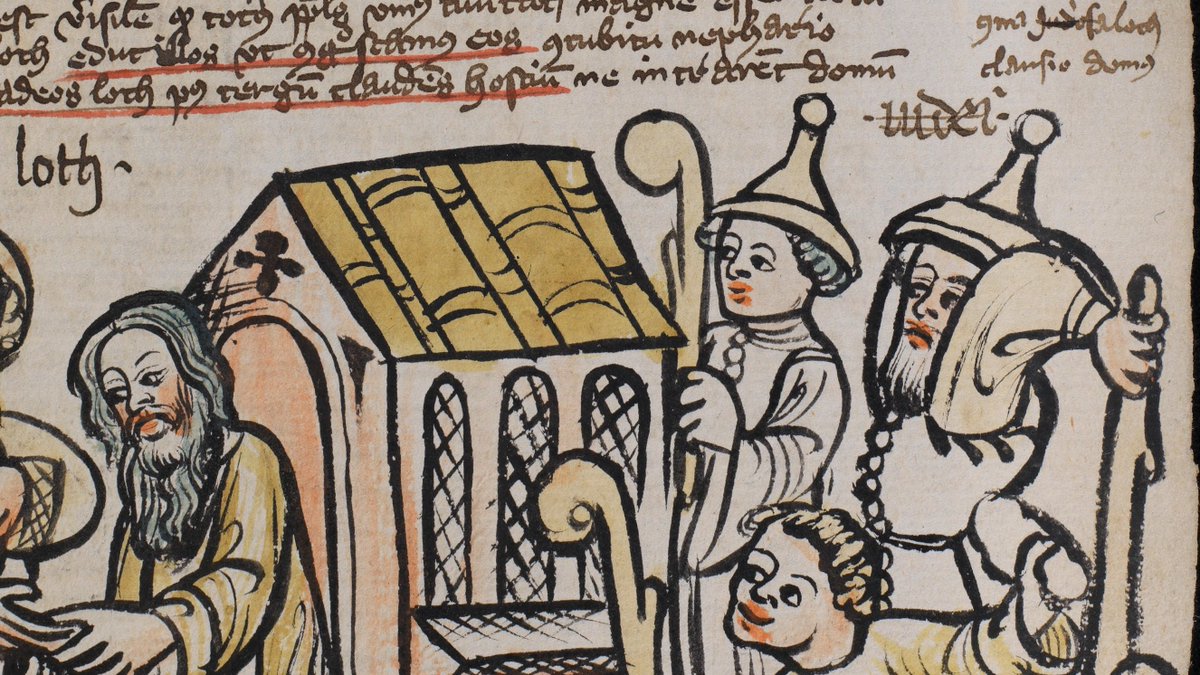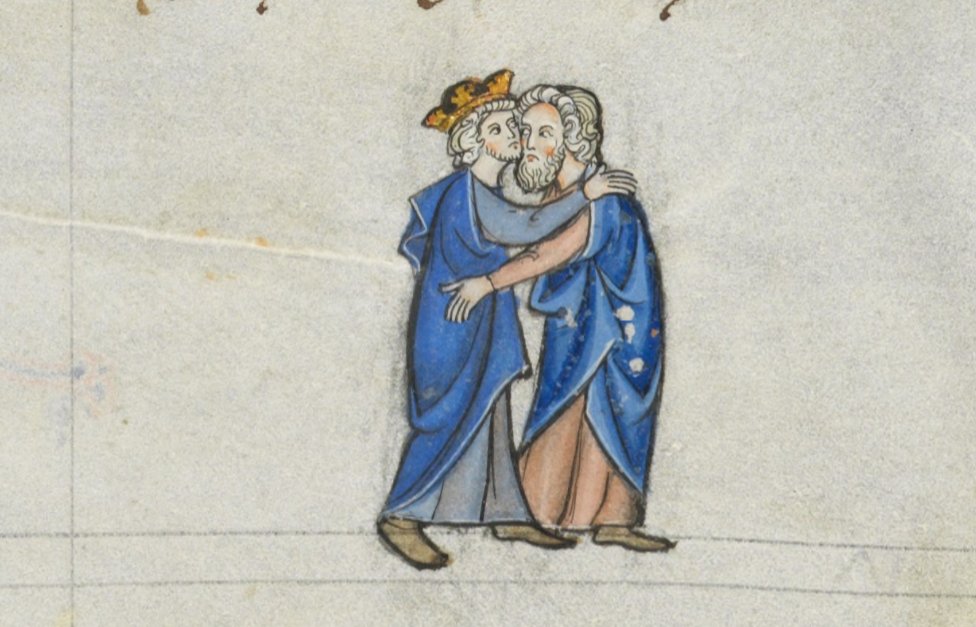How did medieval Europeans represent same-sex desire? Was there a "gay" look? A #MedievalTwitter Thread.
Caveat: there was no medieval term for queer ppl; same-sex desire didn't necessarily mark an identity.
Let's look at some pictures of Sodom!
Caveat: there was no medieval term for queer ppl; same-sex desire didn't necessarily mark an identity.
Let's look at some pictures of Sodom!
I found this image today in a depiction of Sodom, representing men and women being queer together. Note the demon and the hellmouth at their feet.
What does queer desire look like? Embracing. One woman cups another's face. No kisses.
(Bodleian Library MS. Bodl. 270b, f. 14r)
What does queer desire look like? Embracing. One woman cups another's face. No kisses.
(Bodleian Library MS. Bodl. 270b, f. 14r)
Compare to this more well-known image, again with two same-sex couples and assorted devils.
Again, embracing. Hands around the neck or cupping the chin (a common sexual symbol). One kiss.
(Bible moralisée; MS Codex Vindobonensis 2554, Österreichische Nationalbibliothek).
Again, embracing. Hands around the neck or cupping the chin (a common sexual symbol). One kiss.
(Bible moralisée; MS Codex Vindobonensis 2554, Österreichische Nationalbibliothek).
These details matter, I think, because so often embraces, kisses, and touching between same-sex figures in medieval art is dismissed as homosocial.
But that is how queer desire WAS PORTRAYED.
The dudes here are sort of lying down, but that's the closest to a sexual act.
But that is how queer desire WAS PORTRAYED.
The dudes here are sort of lying down, but that's the closest to a sexual act.
If we consider that medieval artists considered just same-sex embraces and kisses as *potentially* expressing queer desire, there's a whole possible tradition of art that could be re-examined.
[TW: rape]
But known images of same-sex desire are really rare. Another place to look for conventions *might* be images of the Sodomites coming to Lot's house to demand he turn over his male guests to them. (Morgan, m739, f. 011r)
But known images of same-sex desire are really rare. Another place to look for conventions *might* be images of the Sodomites coming to Lot's house to demand he turn over his male guests to them. (Morgan, m739, f. 011r)
I am somewhat uncomfortable with conflating rape with same-sex desire, but I think that's actually the conflation made in a lot of versions of the Sodom story.
I think that medieval depictions of Sodom (artistic, etc) often suggest same-sex desire is threatening, aggressive, and violent, about rape rather than love. In the images I've seen, the Sodomites are always armed, demanding entrance.
(Bodleian Library MS. Bodl. 270b, f. 14r)
(Bodleian Library MS. Bodl. 270b, f. 14r)
[TW: anti-Semitism]
This example is really striking, because of their, erm, suggestive staff weapons, and their hats, which are the stereotypical "Jewish hats" used to portray Jewish characters in Christian art.
(Basel, Universitätsbibliothek, MS A II 1, f. 47r)
This example is really striking, because of their, erm, suggestive staff weapons, and their hats, which are the stereotypical "Jewish hats" used to portray Jewish characters in Christian art.
(Basel, Universitätsbibliothek, MS A II 1, f. 47r)
While, ofc, Lot (on the left) is also Jewish, he's not represented as so. The Sodomites (on the right) are racialized and othered, their desire connected with their religious difference. Medieval Christians often attributed sodomy to Jewish and Muslim people, not themselves.

 Read on Twitter
Read on Twitter
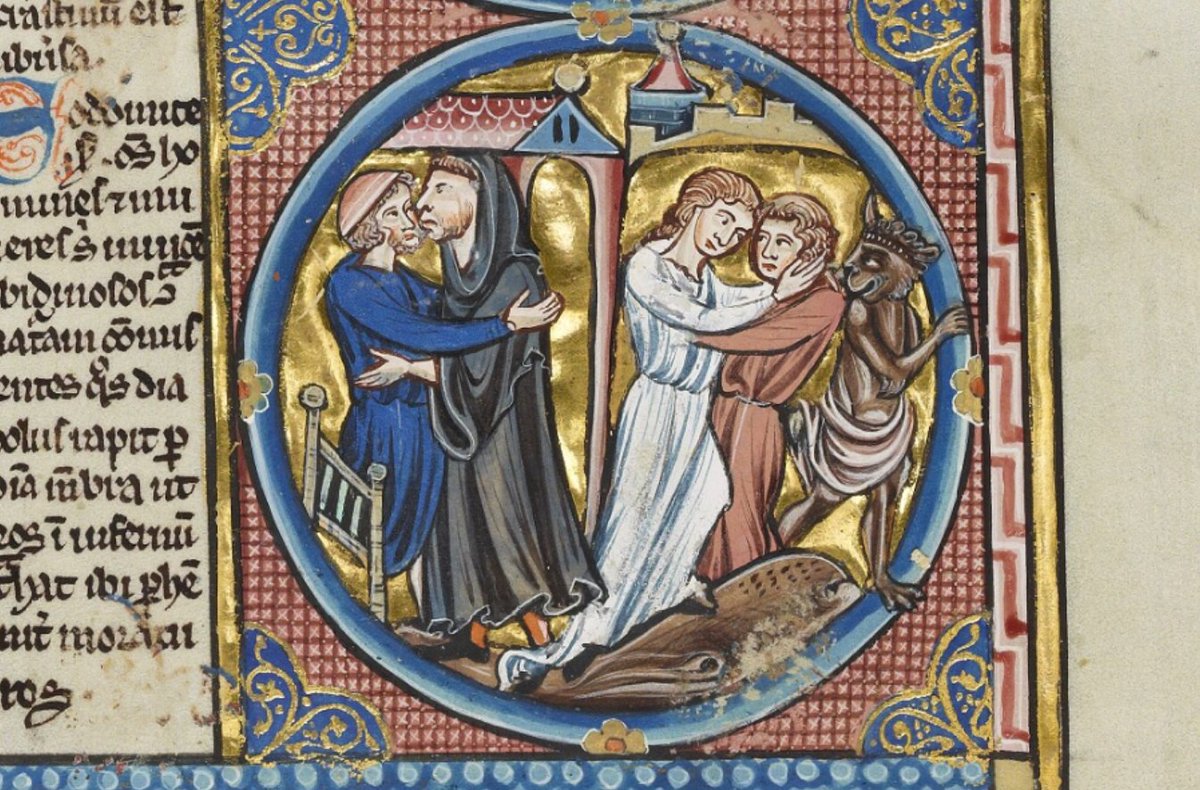
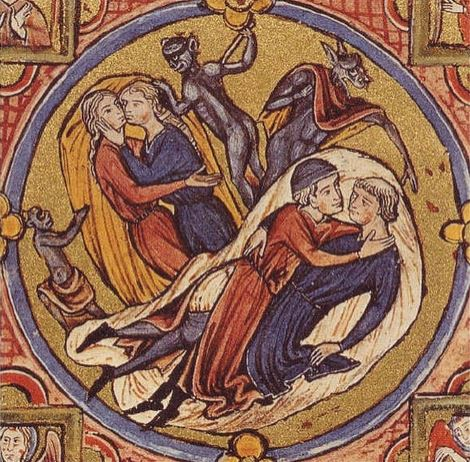
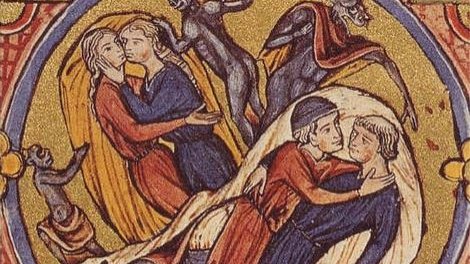
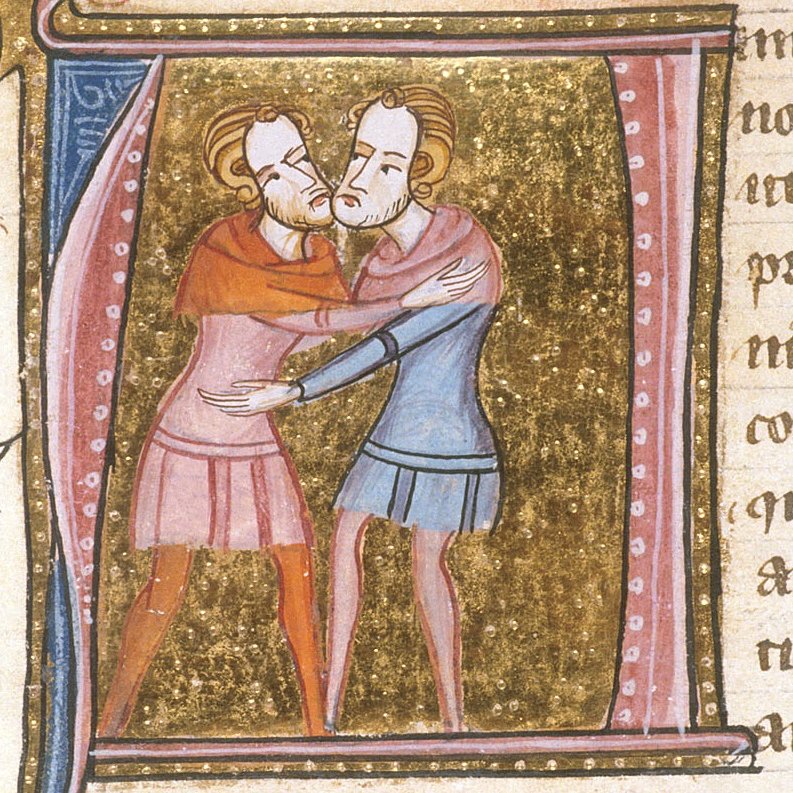
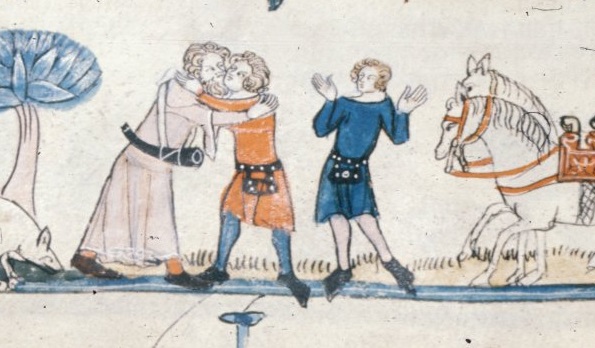
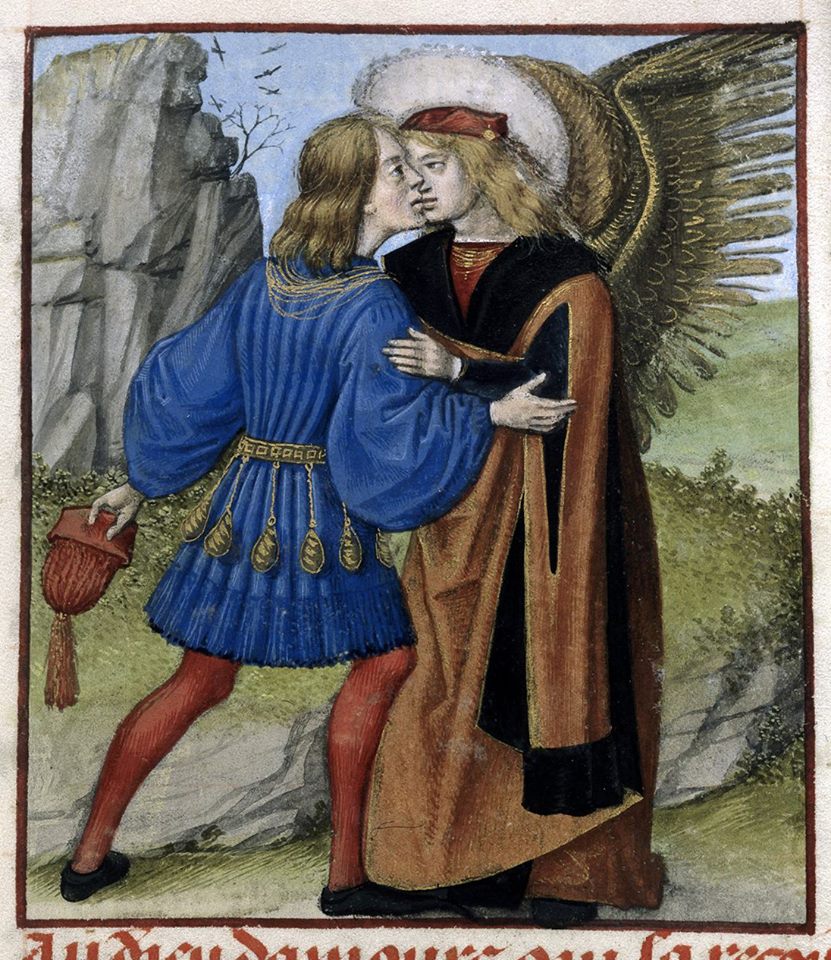
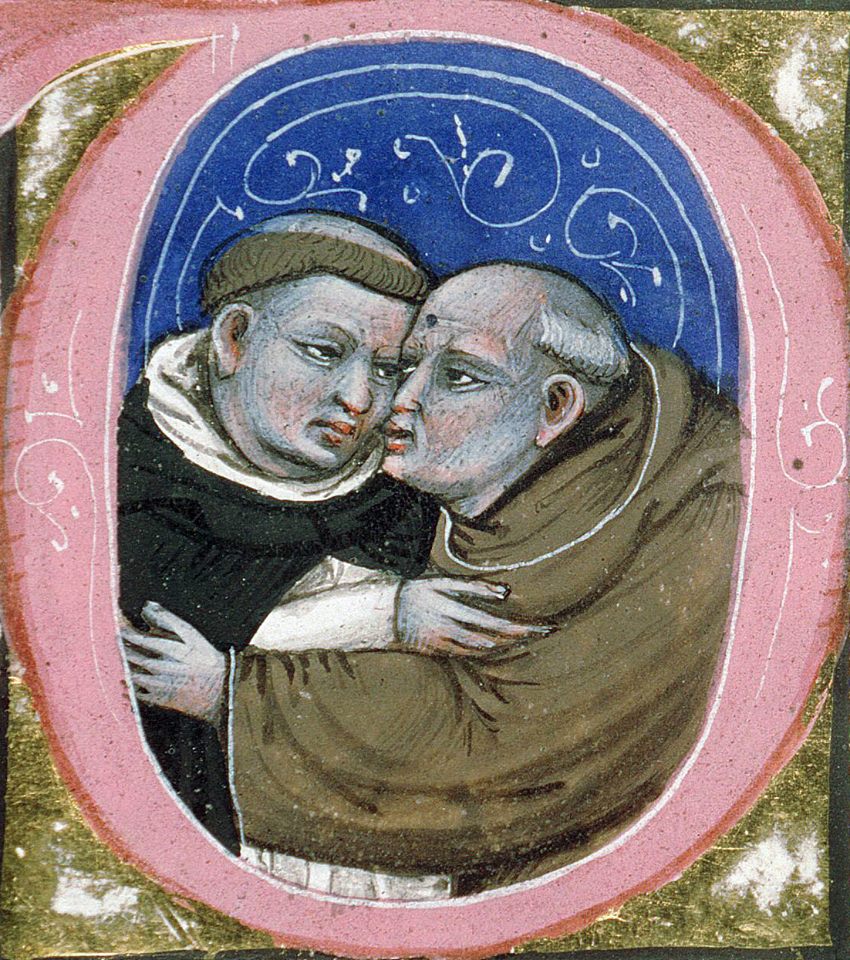
![[TW: rape]But known images of same-sex desire are really rare. Another place to look for conventions *might* be images of the Sodomites coming to Lot's house to demand he turn over his male guests to them. (Morgan, m739, f. 011r) [TW: rape]But known images of same-sex desire are really rare. Another place to look for conventions *might* be images of the Sodomites coming to Lot's house to demand he turn over his male guests to them. (Morgan, m739, f. 011r)](https://pbs.twimg.com/media/EmoSaCsXMAEmHrK.jpg)
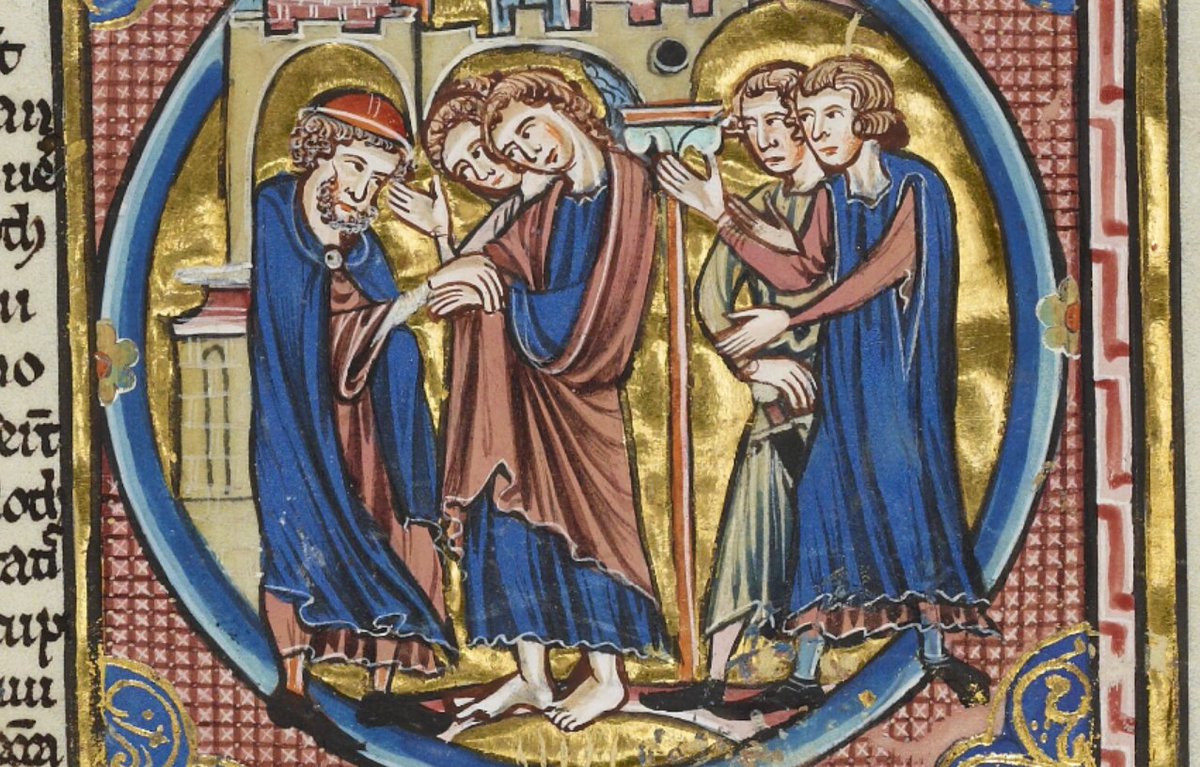
![[TW: anti-Semitism]This example is really striking, because of their, erm, suggestive staff weapons, and their hats, which are the stereotypical "Jewish hats" used to portray Jewish characters in Christian art. (Basel, Universitätsbibliothek, MS A II 1, f. 47r) [TW: anti-Semitism]This example is really striking, because of their, erm, suggestive staff weapons, and their hats, which are the stereotypical "Jewish hats" used to portray Jewish characters in Christian art. (Basel, Universitätsbibliothek, MS A II 1, f. 47r)](https://pbs.twimg.com/media/EmoWvCNXIAgt3wR.jpg)
